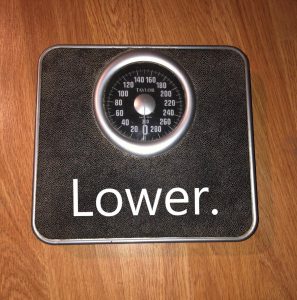UWO wrestlers break down weight cutting process
April 15, 2020
Reducing one’s body weight by up to 10% in just a few days may sound absurd to the average individual, but wrestlers across the country practice cutting weight rather routinely by the time their season rolls around.
With collegiate weight classes ranging everywhere from 125 pounds to 285 pounds, cutting is a practice that every wrestler has to make in order to achieve an optimal weight before a competition.
“The purpose is to make you bigger and stronger at your leanest weight so that you can still perform at a high level,” said UW Oshkosh junior wrestler Justin Mitchell, who falls into the 125-pound weight class.

Weigh-ins typically take place about two hours before wrestling matches or tournaments begin.
This practice is something that all wrestlers do, and although all have their own specific weight that they aim for when they begin their cut, there is a fairly consistent routine that wrestlers will go through in eating.
UWO has meets, invitationals and tournaments of all sorts that begin in November and can run as late as mid-March for those who make the NCAA Division III Championship. This means that the Titan wrestlers purposefully fluctuate their weight rather routinely throughout the five-month stretch of their competition season.
“Physically, it can be draining at first. It takes time for your body to adjust to the new lifestyle of eating and exercising,” said Oshkosh freshman wrestler Guyon Cyprian, who is in the 285-pound weight class.
Although there is a definite jolt in the body’s response when one begins cutting weight, there’s a definite psychological toll taken on the wrestlers who are constantly changing their eating and training habits.
“Sometimes without the ability to drink water during or after a hard practice, you really start to test your mental toughness,” said Oshkosh freshman wrestler Brandon Lenczner, who sits in the 149-pound weight class.
Although there are definite dietary adjustments made in order to drop a desired amount of weight, cutting impacts a wrestler’s training routine as well.
Extra time in the gym and more endurance-focused workouts are just a couple of strategies that wrestlers use to drop the extra weight.
“Practices will just become more intense and faster-paced. You need to have a right mindset when attacking a hard cut, which you should be prepared for days before competition,” Mitchell said.
If a wrestler doesn’t cut down to the weight required to compete in a certain class, they are deemed ineligible for that match or tournament.
This can be a rather devastating blow to an athlete who has put in countless days of effort to cut down on food consumption and increase their physical workload.
“Imagine putting in all that work and giving up the food and water just to come up short and not be able to do the thing you love,” Lenczner said. “It definitely impacts a wrestler and that impact sticks with them for a very long time.”
Overall, cutting weight is something that encourages millions of wrestlers around the world to learn their body type so they can control when to drop and by how much.
This combination of increased physical intensity in the gym, and on the mat, along with a diet that is both strict and scarce in food consumption, has encouraged some wrestlers to stick to a more health-conscious lifestyle.
“Making weight is more than just making weight to wrestle. It’s also about staying healthy,” Cyprian said. “I feel a lot better when I lose weight, and with a healthy diet, I perform better in the classroom and on the wrestling mat.”













